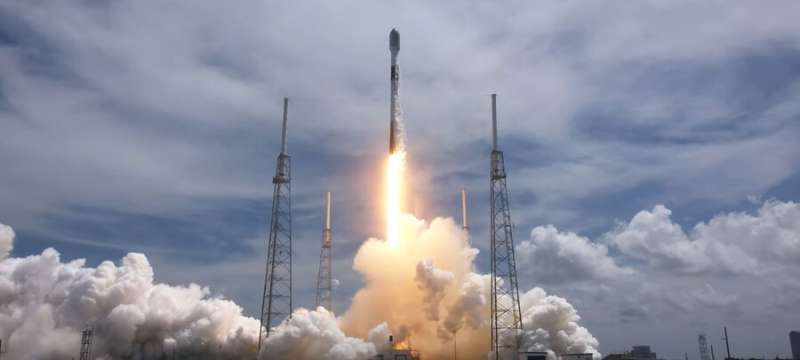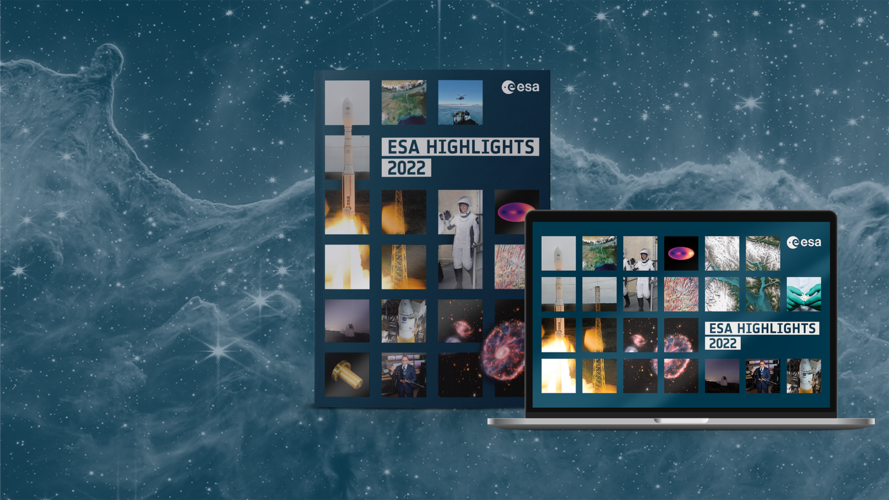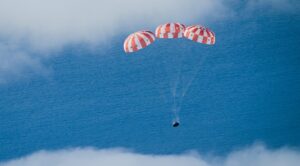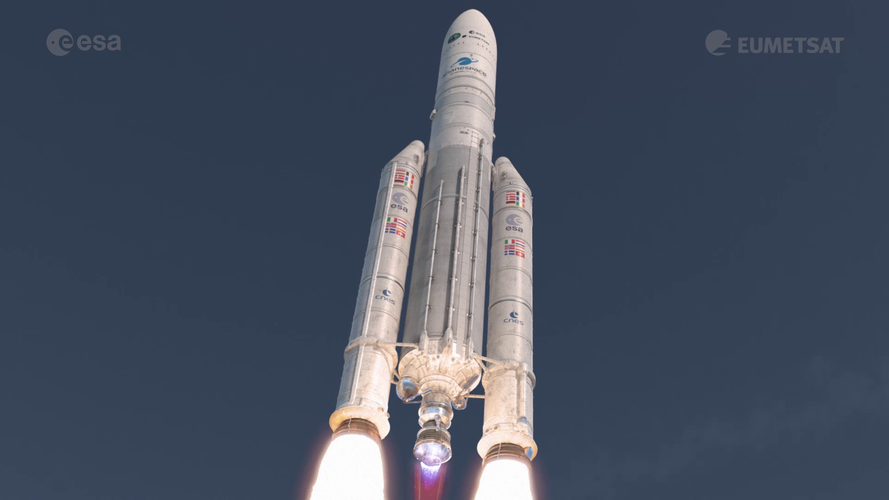Arrakhis: The tiny satellite aiming to reveal what dark matter is made of
Monday, 12 December 2022 16:57
The European Space Agency (ESA) recently announced a new mission of its science program: a small telescope orbiting the Earth dubbed Arrakhis. But although its name is inspired by the sci-fi novel Dune, it will not be looking for sandworms or "spice" on a desert planet.
Instead, this nimble satellite will punch hugely above its weight and try to track down one of the most elusive and mysterious substances in the universe: dark matter. This is the term given to the hypothetical invisible matter that is thought to be more abundant than normal matter and have a similar gravitational effect on its surroundings.
The mission is classified as fast (F), which means it is smaller, more focused and has a quicker turnaround (less than ten years to launch) than other types of ESA missions. The agency's previous F-mission, selected in 2019, is called the Comet Interceptor. Already parked at a stable point in the Solar System, this probe is waiting for a comet to show up and fly by it, something that's due to happen around the time that Arrakhis launches in the early 2030s.
Tiny satellite tests autonomy in space
Monday, 12 December 2022 16:11
In May 2022, a SpaceX Falcon 9 rocket launched the Transporter-5 mission into orbit. The mission contained a collection of micro and nanosatellites from both industry and government, including one from MIT Lincoln Laboratory called the Agile MicroSat (AMS).
AMS's primary mission is to test automated maneuvering capabilities in the tumultuous very low-Earth orbit (VLEO) environment, starting at 525 kilometers above the surface and lowering down. VLEO is a challenging location for satellites because the higher air density, coupled with variable space weather, causes increased and unpredictable drag that requires frequent maneuvers to maintain position. Using a commercial off-the-shelf electric-ion propulsion system and custom algorithms, AMS is testing how well it can execute automated navigation and control over an initial mission period of six months.
"AMS integrates electric propulsion and autonomous navigation and guidance control algorithms that push a lot of the operation of the thruster onto the spacecraft—somewhat like a self-driving car," says Andrew Stimac, who is the principal investigator for the AMS program and the leader of the laboratory's Integrated Systems and Concepts Group.
ESA Highlights: the best of ESA in 2022
Monday, 12 December 2022 10:10
ESA Highlights: the best of ESA in 2022
ESA Highlights 2022 is available online in this interactive format, which can be read on your desktop computer, laptop, tablet or phone.
Artemis 1 success earns widespread praise
Monday, 12 December 2022 09:37
The successful conclusion of the Artemis 1 mission Dec. 11 won widespread support from politicians and industry, a sign of broad support for a program that has suffered extensive delays.
MTG-I1 launch sequence in tune
Monday, 12 December 2022 09:00 Video:
00:02:43
Video:
00:02:43
The animation shows the full launch sequence for the first Meteosat Third Generation Imager (MTG-I1) satellite. MTG-I1 launches on an Ariane 5 rocket from Europe’s Spaceport in Kourou, French Guiana.
MTG-I1 is the first of six satellites that form the full MTG system, which will provide critical data for weather forecasting over the next 20 years. In full operations, the mission will comprise two MTG-I satellites and one MTG Sounding (MTG-S) satellites working in tandem.
The MTG-I satellites carry two completely new instruments, a Flexible Combined Imager and Europe’s first Lightning Imager, to deliver high-quality data for better weather
NASA capsule Orion splashes down after record-setting lunar voyage
Monday, 12 December 2022 07:17 NASA's Orion space capsule splashed down safely in the Pacific on Sunday, completing the Artemis 1 mission - a more than 25-day journey around the Moon with an eye to returning humans there in just a few years.
After racing through the Earth's atmosphere at a speed of 25,000 miles (40,000 kilometers) per hour, the uncrewed capsule floated down to the sea with the help of three large orange
NASA's Orion space capsule splashed down safely in the Pacific on Sunday, completing the Artemis 1 mission - a more than 25-day journey around the Moon with an eye to returning humans there in just a few years.
After racing through the Earth's atmosphere at a speed of 25,000 miles (40,000 kilometers) per hour, the uncrewed capsule floated down to the sea with the help of three large orange Practice makes perfect for student inventions at JPL competition
Monday, 12 December 2022 07:17 Months of preparation led to three teams from one school taking home the top prizes at the 23rd Invention Challenge hosted by NASA's Jet Propulsion Laboratory.
After a two-year hiatus due to the pandemic, the Invention Challenge made a lively return to NASA's Jet Propulsion Laboratory in Southern California on Friday. Now in its 23rd year, the long-running tradition brings together student
Months of preparation led to three teams from one school taking home the top prizes at the 23rd Invention Challenge hosted by NASA's Jet Propulsion Laboratory.
After a two-year hiatus due to the pandemic, the Invention Challenge made a lively return to NASA's Jet Propulsion Laboratory in Southern California on Friday. Now in its 23rd year, the long-running tradition brings together student After 15 Years, 1,000 Tests, Orion's Heat Shield Ready to Take the Heat
Monday, 12 December 2022 07:17 When Artemis I launched on Wednesday, Nov. 16, NASA's new mega Moon rocket carried the Orion spacecraft?- uncrewed, for now - into orbit for the first time, and a new era of lunar exploration began. It's a big moment for NASA and the world. And, yet, one of the people whose work will be tested at the next crucial step - bringing Orion home safely - isn't nervous at all.
Jeremy Vander Kam i
When Artemis I launched on Wednesday, Nov. 16, NASA's new mega Moon rocket carried the Orion spacecraft?- uncrewed, for now - into orbit for the first time, and a new era of lunar exploration began. It's a big moment for NASA and the world. And, yet, one of the people whose work will be tested at the next crucial step - bringing Orion home safely - isn't nervous at all.
Jeremy Vander Kam i Smart Dragon 3 rocket makes maiden flight
Monday, 12 December 2022 07:17 The Smart Dragon 3, a new solid-propellant carrier rocket, made its maiden flight on Friday afternoon, according to China Aerospace Science and Technology Corp (CASC), the country's leading space contractor.
The rocket blasted off at 2:35 pm from a ship in the Yellow Sea and launched 14 satellites into orbit during its flight, the State-owned conglomerate said in a news release.
The
The Smart Dragon 3, a new solid-propellant carrier rocket, made its maiden flight on Friday afternoon, according to China Aerospace Science and Technology Corp (CASC), the country's leading space contractor.
The rocket blasted off at 2:35 pm from a ship in the Yellow Sea and launched 14 satellites into orbit during its flight, the State-owned conglomerate said in a news release.
The Let's try that again Amapari: Sols 3677-3679
Monday, 12 December 2022 07:17 On Wednesday, we uplinked a drill plan, to drill the target "Amapari" in the Marker Band. Coming into planning this morning, we learned that the drill was only able to penetrate 7 mm into the hard rock here, and this was not deep enough for the drill to collect sample that could be analyzed by CheMin and SAM. Fortunately, the RPs examined the workspace this morning and found a second similar are
On Wednesday, we uplinked a drill plan, to drill the target "Amapari" in the Marker Band. Coming into planning this morning, we learned that the drill was only able to penetrate 7 mm into the hard rock here, and this was not deep enough for the drill to collect sample that could be analyzed by CheMin and SAM. Fortunately, the RPs examined the workspace this morning and found a second similar are Curved spacetime in the lab
Monday, 12 December 2022 07:17 According to Einstein's Theory of Relativity, space and time are inextricably connected. In our Universe, whose curvature is barely measurable, the structure of this spacetime is fixed. In a laboratory experiment, researchers from Heidelberg University have succeeded in realising an effective spacetime that can be manipulated.
In their research on ultracold quantum gases, they were able to
According to Einstein's Theory of Relativity, space and time are inextricably connected. In our Universe, whose curvature is barely measurable, the structure of this spacetime is fixed. In a laboratory experiment, researchers from Heidelberg University have succeeded in realising an effective spacetime that can be manipulated.
In their research on ultracold quantum gases, they were able to China's FAST telescope reveals unprecedented details of Milky Way
Monday, 12 December 2022 07:17 The vast space between billions of stars in the Milky Way is not empty, but filled with thin interstellar medium.
Using the Five-hundred-meter Aperture Spherical Radio Telescope (FAST), or the "China Sky Eye," Chinese scientists revealed the unprecedented details of the Galactic interstellar medium.
Led by Han Jinlin, a scientist with the National Astronomical Observatories of China,
The vast space between billions of stars in the Milky Way is not empty, but filled with thin interstellar medium.
Using the Five-hundred-meter Aperture Spherical Radio Telescope (FAST), or the "China Sky Eye," Chinese scientists revealed the unprecedented details of the Galactic interstellar medium.
Led by Han Jinlin, a scientist with the National Astronomical Observatories of China, Astronomers report most distant known galaxies, detected and confirmed by JWST
Monday, 12 December 2022 07:17 An international team of astronomers has discovered the earliest and most distant galaxies confirmed to date using data from the James Webb Space Telescope (JWST). The telescope captured light emitted by these galaxies more than 13.4 billion years ago, which means the galaxies date back to less than 400 million years after the Big Bang, when the universe was only 2% of its current age.
Ini
An international team of astronomers has discovered the earliest and most distant galaxies confirmed to date using data from the James Webb Space Telescope (JWST). The telescope captured light emitted by these galaxies more than 13.4 billion years ago, which means the galaxies date back to less than 400 million years after the Big Bang, when the universe was only 2% of its current age.
Ini Sidus Space selects Exolaunch for LizzieSat Deployment
Monday, 12 December 2022 07:17 Sidus Space, Inc. (NASDAQ:SIDU), a Space-as-a-Service company focused on mission critical hardware manufacturing combined with commercial satellite design, manufacture, launch, and data collection, recently signed an agreement with Exolaunch to use their CarboNIX separation system to deploy LizzieSatTM satellites during the LizzieSat rideshare missions with SpaceX in 2023 and 2024. This agreemen
Sidus Space, Inc. (NASDAQ:SIDU), a Space-as-a-Service company focused on mission critical hardware manufacturing combined with commercial satellite design, manufacture, launch, and data collection, recently signed an agreement with Exolaunch to use their CarboNIX separation system to deploy LizzieSatTM satellites during the LizzieSat rideshare missions with SpaceX in 2023 and 2024. This agreemen New nanosatellite tests autonomy in space
Monday, 12 December 2022 07:17 In May 2022, a SpaceX Falcon 9 rocket launched the Transporter-5 mission into orbit. The mission contained a collection of micro and nanosatellites from both industry and government, including one from MIT Lincoln Laboratory called the Agile MicroSat (AMS).
AMS's primary mission is to test automated maneuvering capabilities in the tumultuous very low-Earth orbit (VLEO) environment, startin
In May 2022, a SpaceX Falcon 9 rocket launched the Transporter-5 mission into orbit. The mission contained a collection of micro and nanosatellites from both industry and government, including one from MIT Lincoln Laboratory called the Agile MicroSat (AMS).
AMS's primary mission is to test automated maneuvering capabilities in the tumultuous very low-Earth orbit (VLEO) environment, startin 
